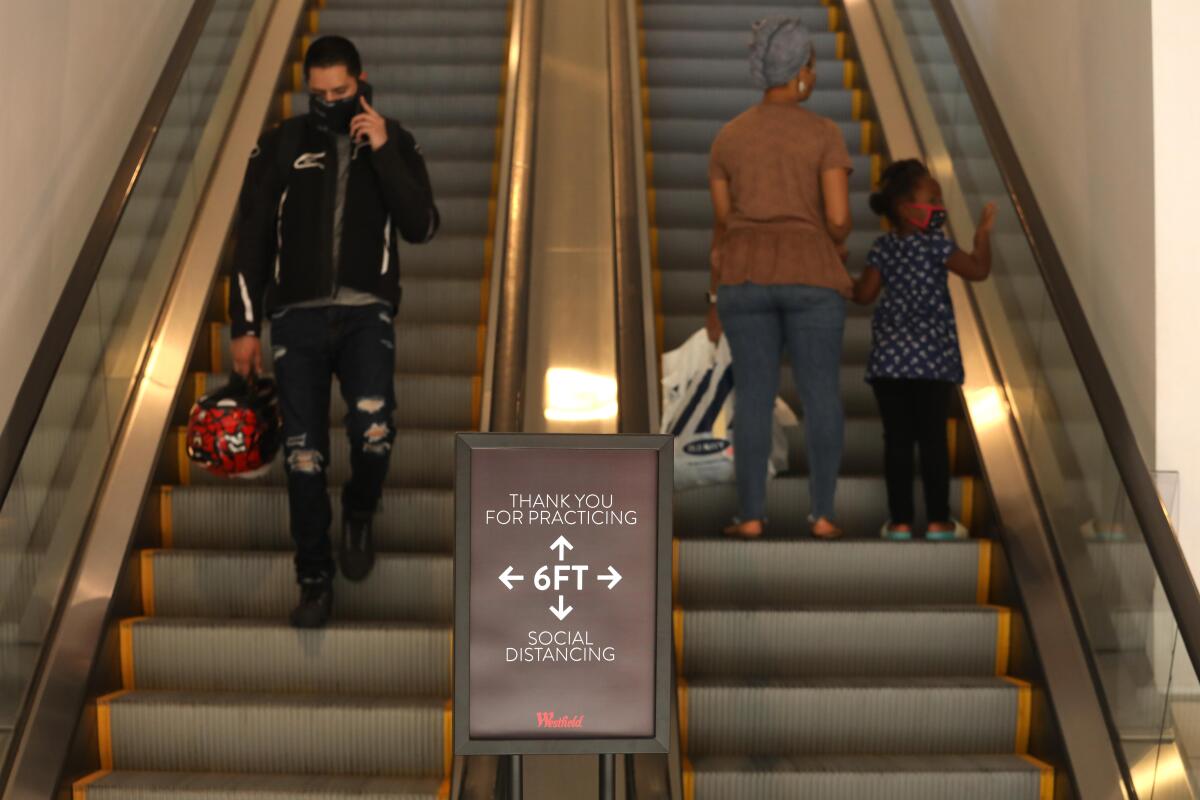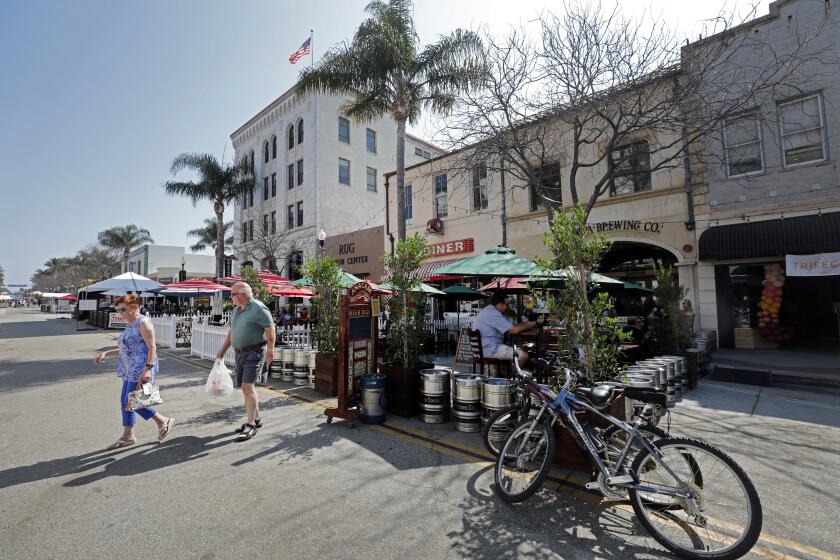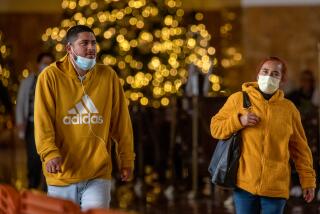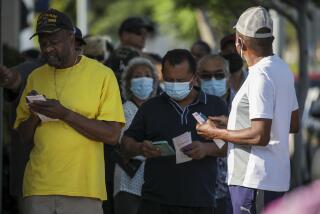Coronavirus outbreaks tied to gatherings, workplaces keep L.A. County from reopening

- Share via
Los Angeles County public health officials said Tuesday that an uptick in coronavirus cases linked to social gatherings and workplace outbreaks is largely keeping the area from moving out of the state’s most restrictive tier for reopening.
While officials remain hopeful the county will be able to progress in California’s reopening plan in the coming weeks, the area is still firmly in Tier 1, or the purple zone — one of only 10 counties in the state still considered to have a widespread risk of community transmission.
Though the county’s positivity rate has dropped to 3.7%, it has been hindered by a high number of coronavirus cases. The metric has been driven largely by outbreaks from personal gatherings, Public Health Directors Barbara Ferrer said during a Board of Supervisors meeting Tuesday.
“The only way we get to Tier 2 is to really double down,” Ferrer said about the county’s goal to move to the next tier. “We’re going to have to get used to living our lives with a different set of rules.”
Worksite outbreaks where there is a cluster of three or more cases have also contributed to the county’s slight uptick in cases, which began around the end of September. Such outbreaks come on the heels of a staggered reopening plan in which the county most recently allowed indoor shopping centers to resume operations last week.
State health officials have released new guidelines for socializing that prohibit gatherings among more than three households.
Following the allowance of school waiver applications, Ferrer said that 59 schools have applied for reopening. Only three, though, were completed and could be fully processed.
Additionally, more than 800 schools have reopened across the county to accommodate roughly 1,800 students with in-person special-needs learning. According to Ferrer, 72% are public schools, a priority that county officials set following the waiver allowance.
Although L.A. County remains mostly at a standstill, a handful of counties were given the green light by state health officials Tuesday for further reopenings. Colusa, Kern, Kings, San Benito, Stanislaus and Sutter counties moved from Tier 1 to Tier 2, and Alameda, Placer and Santa Clara counties advanced from Tier 2 to Tier 3. Each of the four tiers in the state’s color-coded blueprint represents the risk of community spread of the virus.
“This was hard-fought,” Santa Clara County Public Health Director Dr. Sara Cody said during a news briefing Tuesday.
Santa Clara County was once California’s hotspot of coronavirus infections and saw a spike in transmission in mid-June, much like most counties throughout the state. But in recent months, it has been able to mitigate the spread of the virus. The county is currently recording 3.8 cases per 100,000 residents and a positivity rate of 1.7%.
The average number of daily deaths has also dropped to its lowest point since May.
Sierra County was the lone region to advance to Tier 4, joining seven other counties in the state’s least-restrictive category that allows most business operations to open with modifications. The tiny county situated between the Tahoe and Plumas national forests has recorded only six confirmed cases of the coronavirus.
Unlike last week, none of the state’s 58 counties moved backward on the tiered system, but Riverside County faces that possibility.
The county is in Tier 2 — noted for a substantial risk of transmission — but an increase in both the average number of cases and the positivity rate are troubling benchmarks, state health officials said. County leaders have asked state officials to discuss whether the latest data would force the county to return to a more restrictive tier, State Health Services Secretary Dr. Mark Ghaly said during Tuesday’s briefing.
“It isn’t an automatic thing,” Ghaly said about a county’s regression in the tier system, which was implemented seven weeks ago. If a county requests a delay, the state will work to resolve any questions within a week.
“The aim with the adjudication process is to make the case to the state that we can maintain our current status and still control COVID-19 in our communities,” Riverside County Public Health Officer Dr. Cameron Kaiser said.
More to Read
Sign up for Essential California
The most important California stories and recommendations in your inbox every morning.
You may occasionally receive promotional content from the Los Angeles Times.
















